Suleman Kazi
Teaching Dense Retrieval Models to Specialize with Listwise Distillation and LLM Data Augmentation
Feb 27, 2025Abstract:While the current state-of-the-art dense retrieval models exhibit strong out-of-domain generalization, they might fail to capture nuanced domain-specific knowledge. In principle, fine-tuning these models for specialized retrieval tasks should yield higher effectiveness than relying on a one-size-fits-all model, but in practice, results can disappoint. We show that standard fine-tuning methods using an InfoNCE loss can unexpectedly degrade effectiveness rather than improve it, even for domain-specific scenarios. This holds true even when applying widely adopted techniques such as hard-negative mining and negative de-noising. To address this, we explore a training strategy that uses listwise distillation from a teacher cross-encoder, leveraging rich relevance signals to fine-tune the retriever. We further explore synthetic query generation using large language models. Through listwise distillation and training with a diverse set of queries ranging from natural user searches and factual claims to keyword-based queries, we achieve consistent effectiveness gains across multiple datasets. Our results also reveal that synthetic queries can rival human-written queries in training utility. However, we also identify limitations, particularly in the effectiveness of cross-encoder teachers as a bottleneck. We release our code and scripts to encourage further research.
MIRAGE-Bench: Automatic Multilingual Benchmark Arena for Retrieval-Augmented Generation Systems
Oct 17, 2024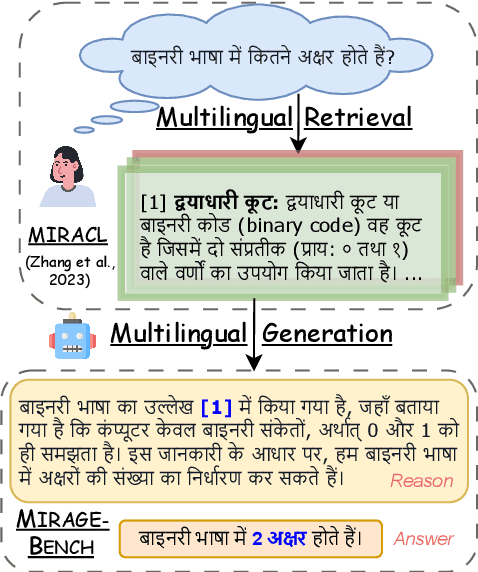



Abstract:Traditional Retrieval-Augmented Generation (RAG) benchmarks rely on different heuristic-based metrics for evaluation, but these require human preferences as ground truth for reference. In contrast, arena-based benchmarks, where two models compete each other, require an expensive Large Language Model (LLM) as a judge for a reliable evaluation. We present an easy and efficient technique to get the best of both worlds. The idea is to train a learning to rank model as a "surrogate" judge using RAG-based evaluation heuristics as input, to produce a synthetic arena-based leaderboard. Using this idea, We develop MIRAGE-Bench, a standardized arena-based multilingual RAG benchmark for 18 diverse languages on Wikipedia. The benchmark is constructed using MIRACL, a retrieval dataset, and extended for multilingual generation evaluation. MIRAGE-Bench evaluates RAG extensively coupling both heuristic features and LLM as a judge evaluator. In our work, we benchmark 19 diverse multilingual-focused LLMs, and achieve a high correlation (Kendall Tau ($\tau$) = 0.909) using our surrogate judge learned using heuristic features with pairwise evaluations and between GPT-4o as a teacher on the MIRAGE-Bench leaderboard using the Bradley-Terry framework. We observe proprietary and large open-source LLMs currently dominate in multilingual RAG. MIRAGE-Bench is available at: https://github.com/vectara/mirage-bench.
FaithBench: A Diverse Hallucination Benchmark for Summarization by Modern LLMs
Oct 17, 2024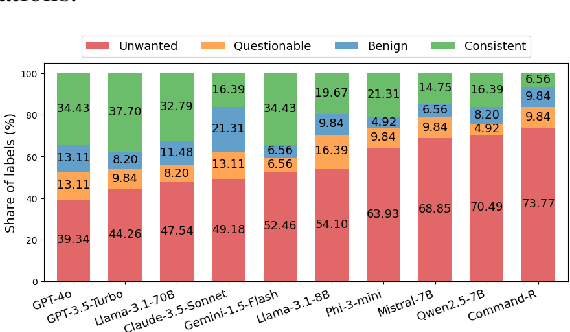
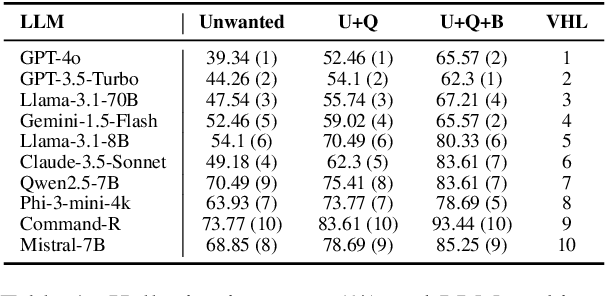
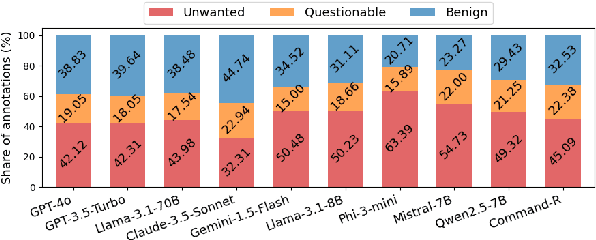
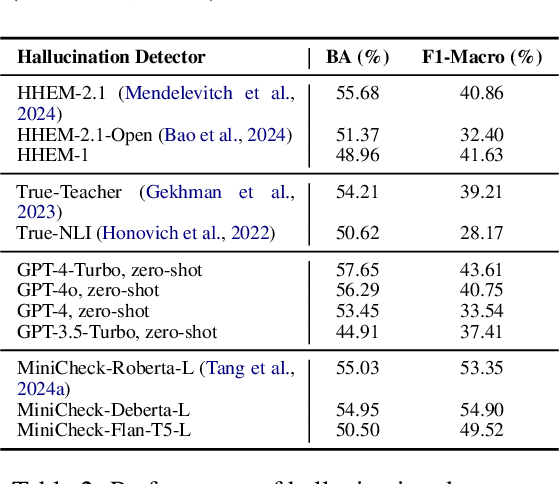
Abstract:Summarization is one of the most common tasks performed by large language models (LLMs), especially in applications like Retrieval-Augmented Generation (RAG). However, existing evaluations of hallucinations in LLM-generated summaries, and evaluations of hallucination detection models both suffer from a lack of diversity and recency in the LLM and LLM families considered. This paper introduces FaithBench, a summarization hallucination benchmark comprising challenging hallucinations made by 10 modern LLMs from 8 different families, with ground truth annotations by human experts. ``Challenging'' here means summaries on which popular, state-of-the-art hallucination detection models, including GPT-4o-as-a-judge, disagreed on. Our results show GPT-4o and GPT-3.5-Turbo produce the least hallucinations. However, even the best hallucination detection models have near 50\% accuracies on FaithBench, indicating lots of room for future improvement. The repo is https://github.com/vectara/FaithBench
 Add to Chrome
Add to Chrome Add to Firefox
Add to Firefox Add to Edge
Add to Edge